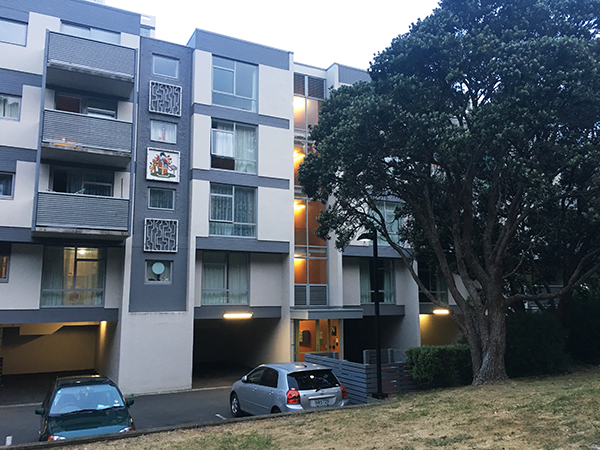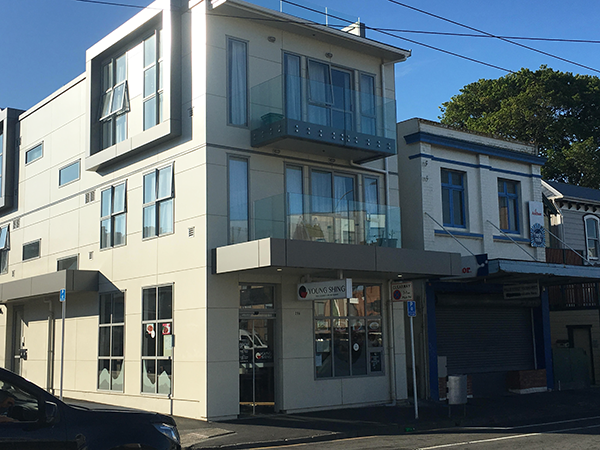This year the world has, more than ever before, begun to feel the impact of climate change. Driving that, the level of carbon dioxide in the atmosphere for the first time passed the 410 parts per million mark at Mauna Loa in Hawaii. Disappointingly, we are also seeing an upturn in projected global carbon emissions, coming after a period of three years of flat emissions. Locally, the Ministry for the Environment and Stats NZ published a report in October on climate change which pointed out that road transport carbon emissions had grown an embarrassing 78 percent (5.8 million tonnes) between 1990 and 2015. On the positive side, new Prime Minister Jacinda Ardern has stated that “This is my generation’s nuclear-free moment, and I am determined that we will tackle [climate change] head on.”
Of course, New Zealand is a small player in the global emissions picture. But like each group of five million or so people around the world, we still have an obligation to do all we can to cut emissions, and we are richer and more globally oriented than most. We have an opportunity to show how smart policy can contribute. I’d argue that the best way of doing so is to demonstrate how reducing emissions can generate a range of ‘co-benefits’ such as improving health outcomes. It turns out that many of our actions to cut emissions from cities can yield significant benefits of this sort, in terms of health or quality of life. I want to talk about those policy options and their benefits.

Central Park Flats, Wellington
There is a strong tactical case for identifying and emphasising these co-benefits. Most social scientists and many policy advisers are aware that most people actually don’t think about climate change that much. They focus on things such as health and quality of life much more. So, appealing to people to tackle climate change by cutting emissions will leave many unmotivated, while asking people to act to improve their health and well-being is much more likely to get their positive attention.
Around the world, researchers are finding stronger links between low carbon lifestyles and health. For example, a recent study established that residents of medium or higher-density urban areas, typically close to the inner city, are more active, more socially engaged, and less obese than people who live in low-density sprawling suburbia. This finding is from the UK, so does not necessarily apply in New Zealand, but my bet is that it does. The way it works, according to author Chinmoy Sarkar, is that “as cities get more and more compact, they become more walkable.” Denser residential areas tend to have more attractive destinations. So people are less dependent on cars, use public transport more, and walk more. Bear in mind that New Zealand has the 3rd highest obesity rate in the world: walking more is vital in helping change that. People’s health improves with walking. All this makes sense in a New Zealand context, and fits with other evidence.
Do we really need to wait for more such studies to prove what some see as obvious? Well, on one hand, we shouldn’t delay sound policy when the stakes (including the likely damage from climate change) are enormously high. For some years, it has seemed clear to me that if we are going to cut carbon emissions rapidly, we need to take a precautionary approach (i.e. act when the evidence is clear enough; don’t wait to dot the last “i”) and use all the measures available. On the other hand, people have a right to be skeptical about how sound policy measures really are, and there is a case for ensuring solid evidence before we take major policy measures such as reshaping our cities. There are always policy surprises. Some policy measures may work faster than others, and policies that may seem obviously worthwhile initially may turn out to be ineffective. Policy analysis and cost-benefit analysis are not exact sciences, as I know from experience: they rest on scientific evidence, at best, and on anecdote or prejudice at worst. So we should, without delay, look at the evidence, make informed decisions, and revise policies quickly if they turn out not to work very well.

Willis & Palmer Street, Wellington
One measure which more and more evidence suggests we should not neglect in the fight to cut carbon emissions is reshaping our cities to be more compact and connected, with a richer mix of land uses, and better public transport. By compact, I mean a well designed mix of townhouses and apartments, often 2-4 storeys, with rail or bus stations nearby. Something like what Hutt City is currently planning. What evidence supports policies going in this direction, with benefits for well-being?
Sources of compelling evidence include the IPCC, the Global Commission on the Economy and Climate, and McKinsey and Company. Let me summarise some of the evidence:
- The IPCC (Intergovernmental panel on climate change) published a hefty report in 2014, distilling a lot of science about cities and carbon emissions. The IPCC is a pretty cautious body, but Karen Seto’s chapter on cities concludes that “key urban form drivers of GHG emissions are density, land use mix, connectivity, and accessibility” (p.978), and that “co-locating higher residential densities with higher employment densities, coupled with significant public transit improvements, higher land use mixes, and other supportive demand management measures can lead to greater emissions savings in the long run…. (robust evidence, high agreement)” (p. 928). All this, and much more, means that the way we build cities, including where and how we put roads, and where we put what sort of building, deeply influences how much carbon we emit.
- The 2014-15 Global Commission on the Economy and Climate focused on global urbanisation and reached similar conclusions. Lord Nicholas Stern (top British economist and author of the famous Stern review) guided this work. The Commission concluded that well managed urban growth is critical for aligning climate stability with prosperity. Cities must be able to expand but should be as compact as possible, with higher densities, mixed neighbourhoods, be walkable and of human scale, redevelop brownfield sites, and maintain green space. Connected infrastructure, including smarter public transport, cycling, car sharing, electric cars and efficient buildings, have a strong support role. Too often, cities expand inefficiently, locking in inefficient infrastructure. This in turn can lock in climate change for the future. As an illustration they contrasted the cost of transport in compact Copenhagen (4 percent of its gdp) with that of sprawling Houston, where transport costs about 14 percent of its gdp and generates much higher emissions. They pointed out that large health gains as well as carbon emissions savings are possible from a scenario based on compact cities with connected infrastructure and good governance.
- The McKinsey Center for Business and Environment published last month an analysis of the biggest opportunities for carbon emission reduction by cities. Their analytical aim was to find a way to achieve at least 90 percent of the cities’ 2030 emission reduction target, and build the capacity to reach net zero carbon by 2050. One of the four priority action areas they identified was enabling ‘next generation’ mobility. This involves building ‘complete, compact communities that meet the mobility needs of residents and business’ (p.7). Central aspects were transit-oriented development, and initiatives to encourage walking and cycling, alongside enabling uptake of next generation vehicles. Outcomes included reduced congestion and air pollution, more equitable access to mobility and better quality of life. It is interesting to see McKinsey’s conclusion that “we have found densification through smart planning to be one of the biggest opportunities to reduce transportation emissions, especially in fast-growing cities.”(p. 41).
In short, there’s ample evidence emerging around the world that policies which reshape urban form and design, infrastructure, and transport systems have multiple co-benefits. As well as cutting carbon emissions, many of these policies cut damaging air pollution, such as diesel emissions, or encourage people to walk or cycle. Either effect results in important health improvements. Just focusing on active transport (walking and cycling), and considering that the physical inactivity death toll globally is more than 3 million deaths a year, more exercise matters. A recent Lancet Commission underlined that more exercise can also reduce the incidence of major non-communicable diseases such as ischaemic heart disease, stroke, diabetes, colon and breast cancer, Alzheimer’s disease, and depression. In short, many urban policies which are carbon friendly are also very important for our health and well-being.
I want to finish by coming back to New Zealand. Persuasive new evidence was published in 2016 comparing walking and cycling rates across six cities with rates of diagnosed diabetes. A striking finding was that cities, where walking and cycling were more prevalent, had lower diabetes rates and vice versa (see graph). Hamilton had the lowest percentage of trips taken by walking and cycling, and the highest rate of diabetes. Wellington was at the other extreme among the six cities considered, with most walking and cycling, and the lowest diabetes rates.
Hamilton is car-oriented. By contrast, Wellington is increasingly oriented to public transport, walking and cycling. At the 2013 census, for example, Wellington’s share of commute trips (to work and study) by walking or cycling was 15 percent, and by public transport was 17 percent. In short, a third of commuters avoided using a car. In the process, they also lower Wellington’s carbon emissions. That record is impressive and as the level rises further, the health and well-being of Wellingtonians will also improve. I’d like to see that happen right across New Zealand cities.





Leave a comment